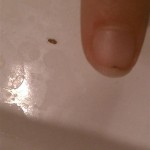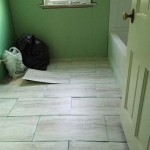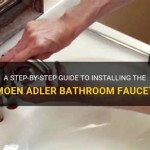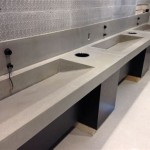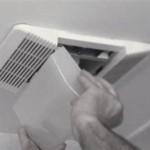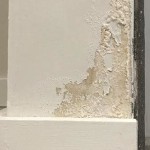How To Stop Your Bathroom Fan From Leaking
Bathroom fan leaks are a common household problem, often manifesting as drips of water from the fan unit itself or stains on the ceiling surrounding the fixture. Identifying the source of the leak and implementing appropriate solutions are crucial to prevent further damage to the bathroom and potentially the structure of the house. Addressing this issue promptly helps to mitigate the risks of mold growth, drywall damage, and electrical hazards. This article outlines potential causes of bathroom fan leaks and provides detailed steps to resolve them effectively.
Identifying the Source of the Leak
Before attempting any repairs, pinpointing the origin of the water intrusion is paramount. A logical approach involves systematically examining potential sources, starting with the most likely culprits. The primary sources of bathroom fan leaks generally fall into three categories: condensation, roof leaks, and plumbing leaks above the bathroom.
Condensation is often the most frequent cause, particularly in bathrooms that experience high humidity levels during showers or baths. When warm, moist air from the bathroom comes into contact with the cold surfaces of the ductwork or the fan housing, condensation forms. This condensation can then drip back down through the fan unit and into the bathroom. Examining the insulation around the ductwork is essential to determine if condensation is occurring. Poorly insulated or uninsulated ductwork is especially susceptible to condensation formation.
Roof leaks represent a more serious concern. Water intrusion from a compromised roof can travel down through the attic space and eventually find its way into the bathroom fan, especially if the fan housing is directly beneath a roof penetration. Indicators of a roof leak include water stains on the attic ceiling near the fan, visible signs of water damage on the roof itself (such as missing or damaged shingles), and a musty odor emanating from the attic space. If a roof leak is suspected, a professional roofing contractor should be contacted to assess and repair the damage.
Plumbing leaks originating from pipes located above the bathroom are another potential cause. These leaks could be due to a faulty toilet, a leaking shower enclosure, or damaged water supply lines. Evidence of plumbing leaks may include water stains on the ceiling, dampness or discoloration around plumbing fixtures, and the sound of dripping water even when the bathroom is not in use. Locating the source of a plumbing leak may require accessing the space above the bathroom, which could involve removing ceiling panels or accessing the attic.
Addressing Condensation Issues
If condensation is identified as the source of the leak, several strategies can be employed to mitigate the problem. Improving ventilation, insulating ductwork, and installing a fan with a higher CFM (cubic feet per minute) rating are common solutions.
Enhancing ventilation helps to remove moist air from the bathroom more effectively, reducing the likelihood of condensation formation. Running the bathroom fan for an extended period after showering or bathing allows for the complete removal of humid air. Consider extending the fan's operation time by 20-30 minutes to ensure thorough ventilation. Additionally, ensuring that the bathroom door is slightly ajar during and after showering can facilitate airflow and reduce humidity build-up.
Insulating the ductwork presents a critical step in preventing condensation. Exposed ductwork is more prone to temperature fluctuations, increasing the risk of condensation. Wrapping the ductwork with fiberglass insulation or using insulation sleeves helps to maintain a consistent temperature within the duct, minimizing condensation. When insulating ductwork, ensure that all joints and seams are properly sealed with foil tape to prevent air leaks and moisture from penetrating the insulation.
Installing a bathroom fan with a higher CFM rating ensures more efficient removal of moist air. The appropriate CFM rating depends on the size of the bathroom. A general guideline suggests that the fan should be capable of exchanging the air in the bathroom eight times per hour. This can be calculated by multiplying the bathroom's length, width, and height (in feet) and then multiplying the result by 0.11. For example, a 5' x 8' bathroom with an 8' ceiling would require a fan with a CFM rating of approximately 35.2. Consider replacing the existing fan with a model that meets or exceeds this CFM calculation.
Furthermore, consider using a fan with a humidistat. A humidistat automatically activates the fan when the humidity level in the bathroom exceeds a pre-set threshold, ensuring that the fan operates only when needed and maintaining optimal humidity levels.
Repairing Roof Leaks
Addressing roof leaks is a critical step in preventing further water damage to the bathroom and the surrounding structure. Roof repairs often require professional expertise, particularly if the leak is extensive or involves structural damage.
The first step in repairing a roof leak is to identify the precise location of the leak. This may involve inspecting the attic space for water stains or dampness and examining the roof itself for damaged or missing shingles, cracked flashing, or other signs of damage. Often, the leak's entry point on the roof is not directly above the location where water is dripping inside the bathroom. Water can travel along rafters and sheathing before finding a path through the ceiling.
Minor roof repairs, such as replacing a few damaged shingles, can often be handled by homeowners with basic roofing knowledge and experience. However, more extensive repairs, such as patching a large hole or replacing damaged flashing, should be entrusted to a qualified roofing contractor. Improper repairs can lead to further damage and exacerbate the leak.
When hiring a roofing contractor, it is essential to obtain multiple quotes and check references. Verify that the contractor is licensed and insured to protect against liability in case of accidents or property damage. A reputable contractor will provide a detailed assessment of the roof damage, recommend appropriate repair solutions, and provide a written estimate of the cost.
In addition to repairing the roof leak, it is crucial to address any water damage that has occurred inside the bathroom or attic. This may involve replacing damaged drywall, cleaning up mold or mildew, and ensuring that the affected areas are thoroughly dried to prevent further deterioration.
Fixing Plumbing Leaks
Plumbing leaks require prompt attention to prevent water damage and potential mold growth. Identifying the specific source of the leak is crucial, and the repair methods will vary depending on the location and nature of the problem.
Start by inspecting all visible plumbing connections and fixtures above the bathroom. This includes checking the toilet supply line, the shower enclosure, and any exposed pipes. Look for signs of water stains, dampness, or corrosion. Tighten any loose connections and replace any damaged or worn-out parts, such as washers or O-rings. A simple tightening of a connection can often resolve minor leaks.
If the leak originates from within the toilet tank, inspect the flapper valve, fill valve, and flush valve. A worn-out flapper valve can allow water to continuously leak from the tank, while a faulty fill valve can cause the toilet to overflow. Replacing these components is a relatively straightforward repair that can often be accomplished by homeowners with basic plumbing skills.
Shower leaks can be more challenging to locate. Inspect the shower enclosure for cracks or gaps in the grout or caulking. Water can penetrate these gaps and seep behind the tiles, causing damage to the walls and ceiling below. Re-grouting or re-caulking the shower enclosure can effectively seal these gaps and prevent further water intrusion.
For more complex plumbing leaks, such as those originating from within the walls or ceiling, it is advisable to consult a licensed plumber. A plumber has the expertise and tools to diagnose the problem accurately and perform the necessary repairs safely and effectively. Attempting to repair complex plumbing issues without proper knowledge and experience can lead to further damage and potentially hazardous situations.
After repairing any plumbing leak, thoroughly dry the affected area and monitor it closely for any signs of recurrence. Address any water damage promptly to prevent mold growth and further deterioration.
Regularly inspecting the bathroom fan, roof, and plumbing can help identify potential leak sources early on, allowing for timely repairs and preventing more significant damage. A proactive approach to maintenance can save time, money, and stress in the long run.

Quick Tip 23 Fixing A Drip At The Bathroom Fan Misterfix It Com

Why Does My Bathroom Ceiling Fan Drip Foothills Roofing Calgary

Why Is My Bathroom Fan Leaking Water

How To Prevent Bath Fan Condensation Fine Homebuilding

Why Does The Upstairs Bathroom Vent Fan Leak Every Time It Rains Quora

Investigating A Dripping Bath Fan Fine Homebuilding

How To Fix A Leaking Extractor Fan Doityourself Com

Why Does My Bathroom Ceiling Fan Drip Foothills Roofing Calgary

Inspecting For Air Sealing At Kitchen And Bathroom Exhaust Fans Internachi

Better Insulation Will Prevent Water Stains Around Bath Fans Diy
Related Posts


